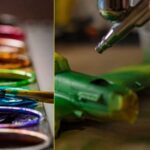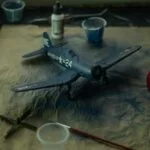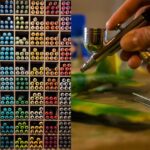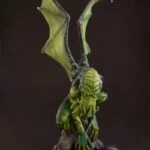Dry brush Vs. Airbrush | Which technique to use when
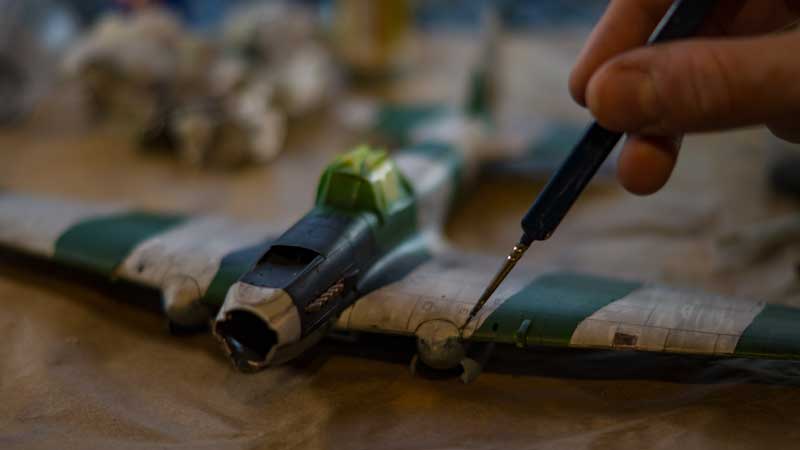
When painting your miniature and scale models, there are three factors to consider,
- your painting technique,
- brush control,
- and artistic ability.
But of all these, the technique you choose matters a lot since a well-mastered technique means you gravitate towards a particular style that doesn’t punish your brush control.
If you know the technique you want but don’t know how to get there or want to develop a technique you’re comfortable with, consider dry brush and airbrushing techniques.
Dry brush Vs. Airbrush – Which is better for models and miniatures?
Airbrushing and dry brushing are two good techniques modelers can use to paint their miniatures and scale model kits. However, they don’t offer the same effects.
When you airbrush your model, you give way to your creative side and experiment with painting styles to make your model unique.
On the other hand, dry brushing is a painting model technique used by modelers since the 1960s to highlight surface textures.
Regardless, airbrushing is best for miniatures and models because it helps you efficiently prime your model, apply smooth paint coats, blend paint over large surfaces and create special effects a regular dry brush can’t recreate.
On the flip side, dry brushing helps you blend colors to achieve precise highlights and details.
So, if you’re looking for smooth effects on large surfaces, choose airbrushing technique.
Dry brushing works best for smaller miniatures with or without texture since it has the power to create texture on flat surfaces. It also highlights raised surfaces on your scale model.
How airbrushing is done
Airbrushing is a painting technique that involves spraying paint onto the surface of your model kit or miniatures with a spray gun, also called an airbrush gun.
But, it’s not simply spraying with a gun.
It requires airflow to push the paint out of the different-sized airbrush nozzle so you can easily paint tiny details in colorful gradients on large surfaces. This airflow is made possible by the compressor attached to the airbrush gun.
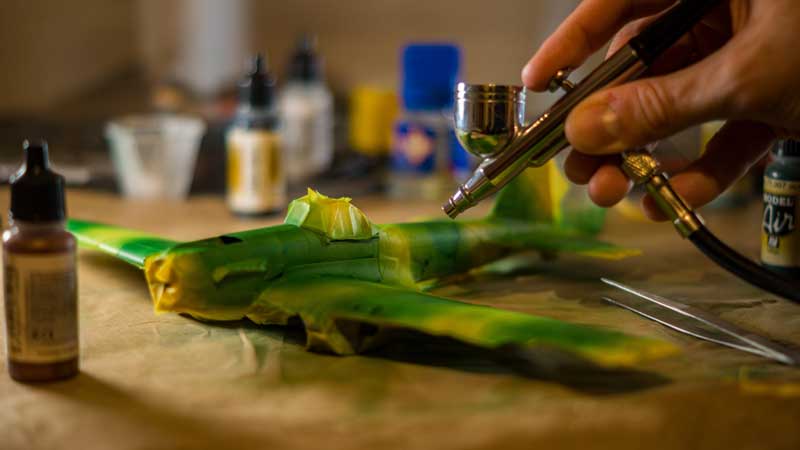

What is dry brushing
Dry brushing is a simple and easy way to highlight miniatures and scale models.
It works in a way that you soak the brush in thinned or untinned paint and apply light strokes on raised surface elements of your model to accentuate the details and add texture to it.
The bottom line, dry brushing is a technique that helps you add depth to an area that would be lost with normal paints to pronounce its edges and realism.
Airbrushing Advantages – Dry brush Vs. Airbrush
- The airbrushing technique helps make detailed work on large areas.
- Airbrushes are usually expensive, but a high-quality airbrush will make it easier for you to achieve better results that last longer than dry brushing paints.
- If you’re into figurine displays like Gunpla or models like Warhammer, airbrushing is a useful technique that helps you achieve a smooth finish as opposed to the rugged weathering look of dry brushing.
- Airbrushing also offers even coating better than dry brushing. With airbrushing, you can easily achieve an even layer of paint on your models provided you choose good quality paints.
- It also allows you paint hard to reach surfaces that would be difficult to paint with a brush.
- With airbrushing, you can get the finest color gradients effect.
Read more about painting techniques:
Airbrush Vs. spray paint
LeisureGuided.com
Dry brushing Vs layering
Airbrush Vs. Paint Brush
The effect you can get with airbrushing
With airbrushing, modelers can achieve various effects when they paint. Airbrushing offers an impeccably smooth finish.
Other effects you can expect to get with airbrushing include:
- Added texture
- High level of details, from creating blurry effects to smudges and shadows,
- High color contrast
- Monochrome effects
Dry brushing Advantages – Airbrush Vs. Dry Brush
- Dry brushing makes it easy to paint the smallest details with a brush.
- It is easy and takes a few tries to get the technique right.
- Since it requires only a little practice, beginners will find dry brushing a comfortable technique to work with.
- Dry brushing allows you to create weathered and textured effects, something no other painting technique offers.
The effects you can get with dry brushing
One of the most important considerations for dry brush paint is high pigmentation.
When you use highly-pigmented paints for airbrushing, you easily create a worn-out, rough, and weathered effect as opposed to the smooth textured effect of airbrushing.
This effect adds character and depth to your model, so they look more like the real thing.
Airbrush vs Dry Brush – When should you use each
Both techniques help you create high levels of realism and dimension in your models.
Airbrushing is best on models with large surfaces, so you can easily get smooth details, patterns, accents, and precise color transitions.
But you should only use this technique when you want to prime large areas, add basecoats, and for shading.
Dry brushing is best used when highlighting the detail of raised surface elements and textures on a miniature model, which regular paintwork might conceal.
However, you may need to dry-brush the areas that need detailing before painting other parts.
What do most modelers prefer – Airbrush or Dry Brush?
Dry brushing is, no doubt, the oldest painting and highlighting technique used by modelers to date.
However, modern modelers continuously use the airbrush technique because it allows them to experiment and get creative without being difficult to learn.
Airbrushing can be used to create unique effects unlike any other technique offered, from fin details to impressive color transitions and opaque color gradients.
Plus, you can use airbrushing techniques on almost every miniature or scale model surface, whether metal, plastic, or wood.
The best part is that model builders know that almost all paints work well with airbrushing techniques as long as they are highly pigmented. This way, they can easily mix colors to form unique color variations.
Airbrushing vs Dry Brushing – Which is easier to master?
Dry brushing is an easy technique that doesn’t require much paint work or skill.
However, the high-quality features of airbrushing make it easier to clean and smooth results on any miniature or scale model you use them on.
But, to easily use the airbrushing technique, you need to familiarize yourself with the materials required, have some level of experience and know how to skilfully apply the paint.
You can use both techniques on a model or miniature
Although different techniques and different effects, you can use both at the same time.
For instance, you can choose to airbrush a topcoat and drybrush over it.
Alternatively, you can airbrush the basecoats and use the dry brushing technique to add more highlights. It all depends on the effect you desire.
Conclusion
Airbrushing and dry brushing are powerful tools to highlight details and paint miniatures and scale models.
However, airbrushing can be a more technical option for beginners.
Regardless, if the result you want from your model is a smooth and unique color gradient, go for airbrushing. Dry brushing will only help you highlight tiny details to make them look sharp rather than big and vague.

